Riding Disciplines
Welcome to Riding Disciplines which covers every English and Western riding style! The English riding covers Dressage, a ballet on horseback, Driving which features both the beautiful horses and the carriages they pull, Foxhunting, Eventing, Jumping, Saddle Seat, and even the sport of Polo.
The Western riding category includes Pleasure, Reining and all Rodeo events involving a horse, so look for Barrel Racing, Bronc Riding, Chuck Wagon Racing, Cutting, Pole Bending and Roping.
Want to know the date of your favorite horse show or rodeo? Don’t miss it! Dates and locations are included in the in both the Calendar of Events for English Riding and the Calendar of Events for Western Riding. Are we missing a category or event? Please use the useful feedback link and let us know!
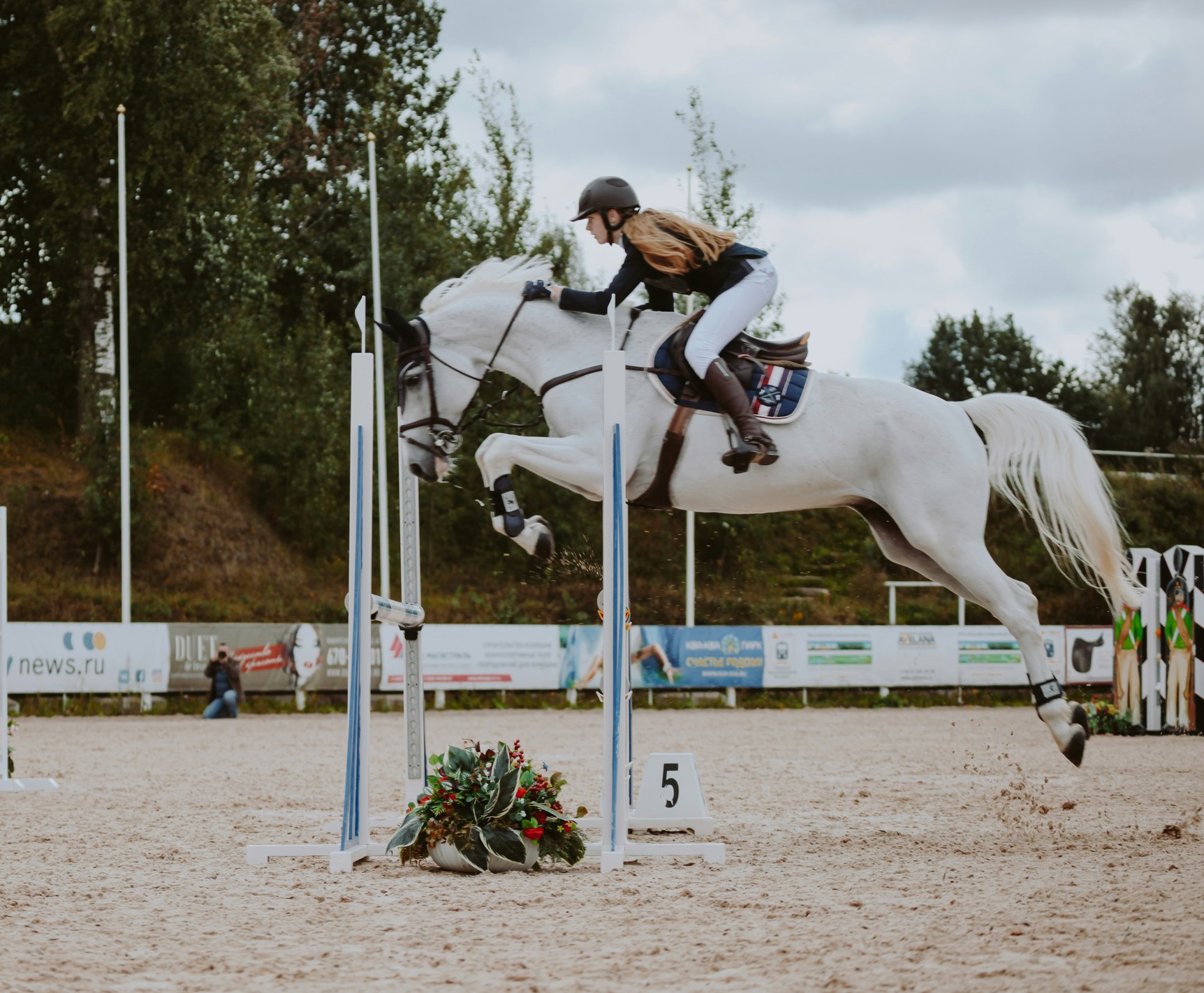
Horseback riding is one of the few pursuits where skill and unpredictability constantly intertwine, like a dance. No matter how experienced a rider may be, each time they step into the stirrups, they are entering into a dialogue with another living being. one with its own moods, instincts and energy. This blend of preparation and uncertainty is precisely what makes equestrian life so compelling. Riders don’t just crave control... they crave the challenge of facing risk, adapting and ultimately finding reward in the journey itself.
It is this very dynamic (risk balanced with reward) that has always drawn humans to more than just the saddle. Games of chance, contests at fairs and leisure activities mirror the same pattern: we enjoy uncertainty, not in spite of it, but because it forces us to adapt, focus and sometimes, simply let go. Let's break down why that mindset is significant.
The Equestrian Spirit and Calculated Risk
Every rider knows the quiet moment before a horse takes a jump: the reins are gathered, the rhythm steadies and for a few seconds, control hangs in the balance. The horse could clear the obstacle beautifully, hesitate, or refuse altogether. Riders train to minimize unpredictability, but they never eliminate it. The risk is part of the reward.
In many ways, this relationship mirrors other areas of life where people test their ability to face uncertainty. Just as a horse demands trust and patience, so too do activities that challenge chance. Riders, perhaps more than most, understand that thrill isn’t about guaranteed success. They understand it’s about navigating variables with composure and courage.
Horses and Games: A Longstanding Connection
Horses have always been tied to human culture not only as partners in labor and travel, but also as central figures in entertainment and games. From ancient chariot races to Renaissance fairs, equestrian events often mingled with contests of luck and spectacle.
Fairs in Europe, for example, frequently combined horse shows with archery contests, dice games and carnival-like amusements. These gatherings weren’t just about demonstrating skill but about indulging in the unpredictability of play. The horse, as a symbol of speed and vitality, often became the centerpiece around which chance and competition thrived.
Even today, modern horse shows retain some of this festive spirit. Beyond the competitions in the ring, there’s often a culture of camaraderie, food, music and small diversions. Honest proof that riders and spectators are both drawn to the same balance of risk and reward that horses so beautifully embody.
Modern Leisure Beyond the Stable
Of course, riders today live in a world that stretches far beyond the stable or the showground. After long training sessions or weekends on the road for competitions, relaxation takes many forms. Some prefer quiet evenings, others social gatherings and many turn to digital entertainment for lighthearted distraction.
It is in these spaces of casual leisure that parallels to equestrian life emerge again. Just as riders savor unpredictability on horseback, they may enjoy games that echo the same thrill in smaller, more controlled doses. For example, some turn to low-stakes online amusements like free slots with bonus and free spins, where the fun lies not in certainty but in the simple act of playing with chance. The stakes are minimal, but the pattern (anticipation, suspense and outcome) remains universally familiar.
What Riders Teach Us About Play
Equestrians bring a unique perspective to the idea of games and risk. They understand better than most that success often depends not on eliminating uncertainty, but on learning to manage it. Patience, resilience and adaptability are as valuable in the saddle as they are in any activity of chance.
A rider guiding a horse through a dressage test demonstrates control and finesse, but also the ability to adapt when the horse reacts unexpectedly. Similarly, when people play games of chance, the challenge is not in predicting every outcome but in embracing unpredictability without frustration. Riders embody this lesson every day: balance preparation with acceptance, skill with humility.
The Universal Allure of Chance
Whether on horseback or at a game table, humans have always sought spaces where skill meets uncertainty. The appeal lies not in guaranteed outcomes but in the thrill of possibility. A clean jump in the arena feels like victory not because it was assured but because the rider took the risk and found success.
The same applies to games: the joy is in the suspense, in the moment before the outcome reveals itself. The universality of this attraction explains why horses and chance-based amusements remain timeless. They speak to something fundamental about human nature: our desire to test limits, flirt with uncertainty and savor the thrill of outcomes we cannot fully control.
Riding, Risk and the Human Spirit
At its core, the equestrian lifestyle reflects the balance between risk and reward that defines so much of human existence. Riders step into the saddle not to control every outcome but to experience the joy of navigating the unknown with skill, patience and courage.
When viewed this way, it’s no surprise that equestrians also appreciate forms of play that echo the same dynamic. Whether in the arena, at the fair, or through casual diversions beyond the stable, the lesson is clear: joy is not about certainty, but about embracing uncertainty with confidence.
In both the world of horses and the world of games, the human spirit thrives on chance. It’s not about winning every time. Not in the slightest. It’s about daring to ride, daring to play and finding meaning in the sheer unpredictability of the journey. This... is the essence of life.
There are more interesting articles in our section on Riding Disciplines.
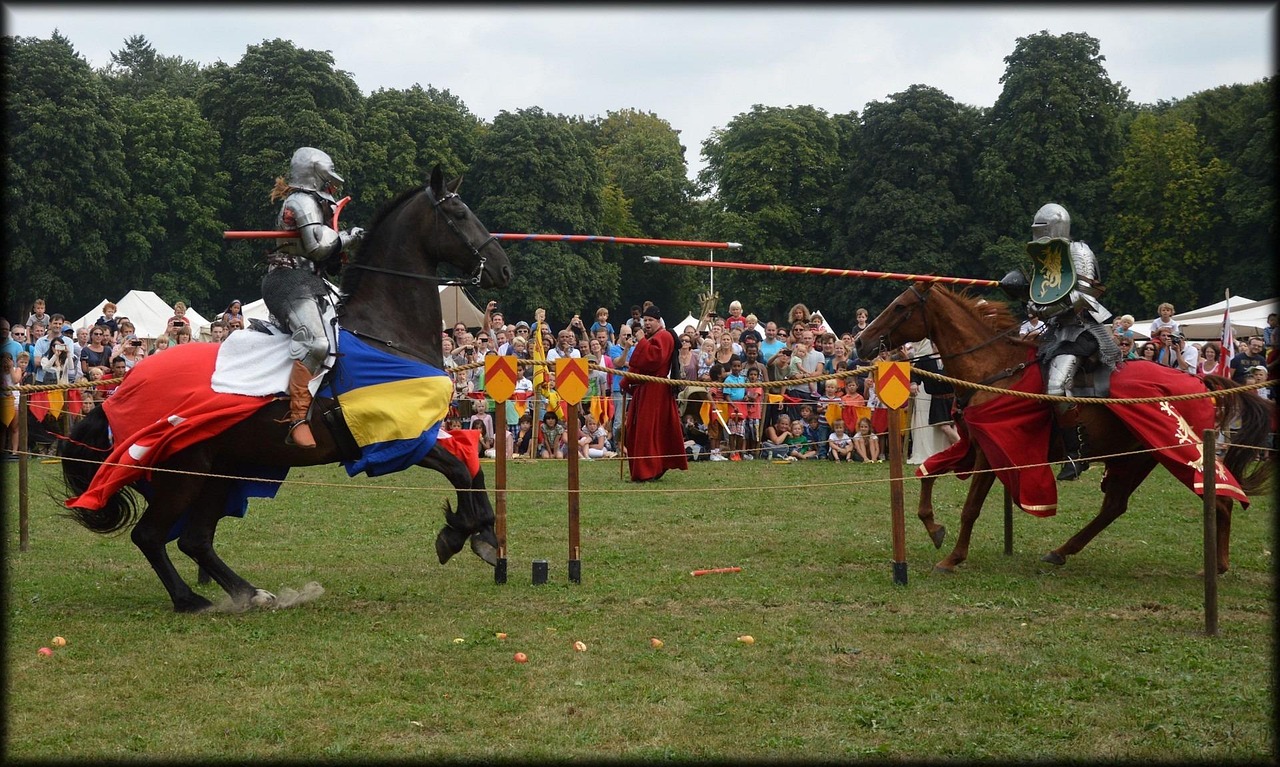
While popular equestrian sports like show jumping, dressage, horse racing, polo and Western pleasure are well-known, there are many unique and less common horse sports and activities that offer different challenges and showcase the versatility of horses and riders. Here are some unusual horse sports
Mounted Sports with a Ball/Object
Horseball: This is a fast-paced team sport that combines elements of polo, basketball, and rugby. Teams of four riders pass a ball with handles and attempt to score by shooting it through a hoop.
Polocrosse: A hybrid of polo and lacrosse, players use long lacrosse-like sticks with nets to carry, pick up, and throw a ball while on horseback, aiming to score goals.
Pato: Originating in Argentina, this is a much rougher version of horseball, so intense it has been banned multiple times. Teams compete to get a ball with handles into a net.
Cowboy Polo/Horse Soccer: Informal games played with brooms and large rubber playground balls or extra-large, soft balls that horses bat forward with their front legs.
Historical/Skill-Based Mounted Sports
Jousting: Competitive jousting focuses on accuracy, with riders in armor using balsa wood lances to score points by hitting targets.
Mounted Archery: Riders shoot arrows at targets while their horses are in motion, often on a course with a single moving target. It requires incredible coordination and accuracy.
Tent Pegging: An ancient cavalry practice where riders gallop and use a lance or sword to pick up small targets (pegs) from the ground. It's popular in India, Australia, and parts of Africa and the Middle East.
Endurance and Team Challenges
Endurance Riding: While sometimes considered mainstream, this discipline involves very long-distance races over varied terrain, testing the stamina of both horse and rider.
Ride and Tie: A unique endurance sport where a team of two riders and one horse alternates between riding and running. One rider sets off on the horse while the other runs, then they switch.
TREC (Techniques de Randonnée Équestre de Compétition): A French equestrian sport that involves a mounted orienteering course, a mastery of gaits, and an obstacle course, testing a horse and rider's partnership and skills for trail riding.
Winter Sports
Skijoring: Derived from a Norwegian term meaning "to be driven forward," skijoring involves a person on skis being pulled through the snow by a horse (or dogs or a vehicle).
Gymnastics/Acrobatics
Vaulting: Often described as gymnastics on horseback, vaulters perform acrobatic and dance movements on a cantering horse, typically on a lunge line. It's a recognized FEI discipline.
Working and Cultural Sports
Buzkashi: A traditional Central Asian sport, incredibly rough and fast-paced, where riders compete to seize and retain possession of a goat or calf carcass.
Working Equitation: This discipline showcases the practical skills of horses and riders used in traditional working livestock environments. It includes dressage, ease of handling (obstacle course), and speed tests.
These sports highlight the incredible athleticism and intelligence of horses, as well as the diverse ways humans have partnered with them throughout history and across cultures. Take a look at Other Disciplines on EIE. It is amazing what you'll find!
You can find more informative articles in our section on Riding Disciplines. Be sure to take a look at our Curated Amazon Store.
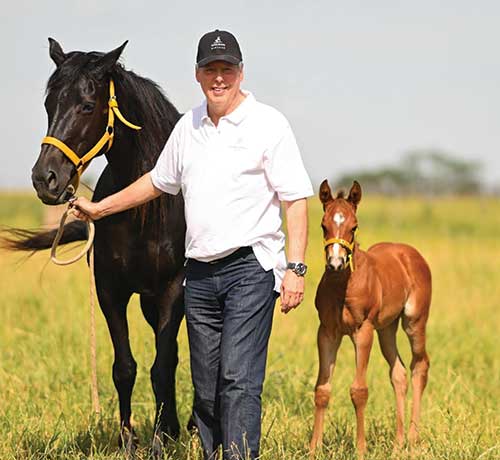
by Lucas Noel
Toward the end of last year, a news story that shook the breeding world was released. A laboratory announced a supposed milestone in equine biotechnology by disclosing the birth of five horses genetically edited using the CRISPRCas9 technique. The procedure involved using a small part of a gene from one mare and introducing it into another.
To do this, scientists alter the DNA by cutting out specific areas of the genome and removing, adding or replacing the area. This can be done to change physical traits and/or disease risks. The company that carried out the process is Kheiron, a firm that has already had world-scale achievements in its specialty of cloning high-performance horses. These results, which include the use of stem cells for cloning and a generation of the world’s first genetically edited embryos, have already been published.
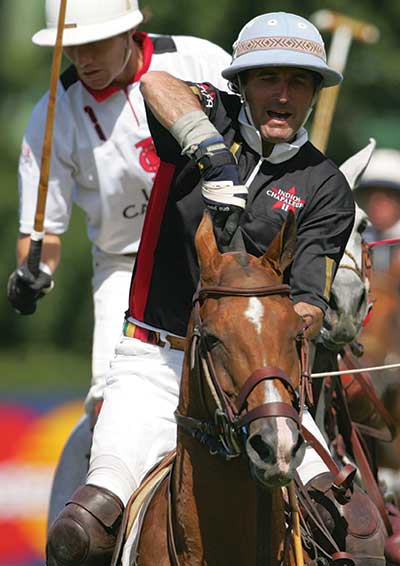
Photo credit: Sergio LLamera Archives
Its initial impact was enormous when it became known that important names in Argentine breeding were behind this initiative. Doña Sofia Polo and Alberto Pedro Heguy allowed the editing of DNA from Polo Pureza (High Host x Purita), the best mare of the 1993 Argentine Open and a member of the Argentine Polo Horse Breeders Association’s (AACCP, is the acronym in Spanish) Hall of Fame. The mare first played the Argentine Open at just 4 years old, much younger than most horses play at that level. Heguy said she was playing practices at 2½ years old.
Heguy’s 10-goal son Pepe played the horse for 14 polo seasons, usually two chukkers and sometimes a third. “Polo Pureza, here in Palermo, brings me incredible memories. ... She had an impressive head and a luxurious mouth,” Pepe Heguy said in an AACCP video. “It made me win the last [Argentine] Open that we won when no one thought we could. ... No one expected it and we ended up winning.
But, the last year, the truth was that Pureza gifted it to us. ... We had to play on Field 1 the semifinal against Cambiaso and on that day with Pureza, I scored four goals and we ended up winning by four goals.” His brother and teammate Eduardo “Ruso” Heguy remembers, “She had an impressive sensibility, resistant, she didn’t get tired. Perhaps she wasn’t the fastest. Pepe knew how to use her perfectly because of the anticipation. He was perfect for that mare, so it was a spectacular combination.”
Gene editing can potentially add speed to this mare’s clones. “The expectation is that Polo Pureza will acquire sprinter or explosion characteristics that she did not possess, while retaining her other qualities,” Alberto Pedro Heguy said. However, the controversy in the polo world was immediate: Is it a scientific breakthrough, like embryo transfer or cloning were at the time, or manipulation similar to the use of a performance enhancing substance?
In the first days of this year, the Argentine Polo Association was categorical on the issue: it is genetic doping.
“One of our purposes is to ensure conditions of equality and competitive transparency of all equines participating in the sport of polo, as well as to ensure compliance with regulations regarding the prevention of doping in equines, whether substances or methods, such as therapies and genetic editing not authorized at the international level, understanding that this is considered genetic doping in the world, and thus affects the industry and puts at risk the trade and export of equines,” read an official statement from the governing body of polo in Argentina.
“In that sense, it is ratified that temporarily and/or until the international context changes, the eventual use of manipulated or genetically edited horses will not be allowed by the AAP for the game of polo in any official or unofficial tournament, either in the AAP or in any associated club.”

the foals are not considered genetically modified.
Kheiron’s scientific director, Gabriel Vichera, explained, “We design their genome before they are born. We do this by using the so-called genetic scissors techniques, which are molecular tools that allow us to go to any region of the genome, make a precise cut, and be able to make a change in that genome...
“This important scientific development was carried out in an extremely rigorous manner, complying with the strict requirements of the National Bioeconomy Directorate and the National Advisory Commission for Agricultural Biotechnology, the national biotechnology regulatory authority, so that it would not be considered a GMO (genetically modified organism), and therefore a specimen that could be found freely in nature, and thus it has just been approved.
“This was done precisely for this purpose, in order to comply with the regulations of the AACCP and the Argentine Rural Society (SRA, its acronym in Spanish), so that the specimen obtained is not considered to be genetically doping. It should be noted that Argentina is a world leader in the development of standards in this regard.”
According to the firm, the technique used seeks to identify genes that respond to a certain characteristic. In a single step, a specific gene can be introduced into an animal for a specific purpose. The company explained it changed the genes of Polo Pureza, as she did not have the explosiveness required in today’s competitions, and it added the gene of a sprinter, a horse known for more explosive power. “A lot of care was taken to comply with all the regulations so that the animal is considered a normal animal and can be released into the wild. What we are looking for is to have an ordinary animal and not have it confined,” said Daniel Sammartino, founder & CEO of Proinvesa Group and president of Kheiron.
Polo Pureza’s five clones were born within 15 days of each other and the scientists hope their characteristics will gradually find a place in the sport. “I think people will wait, as happened with cloning. Today there are many clones, but at the beginning there were many doubts. As long as genes with certain characteristics can be identified, we will have to see and study what other attributes are associated with this gene. This is the beginning of a journey,” Sammartino added.
Such gene-editing projects have been carried out for some time in biotech, both in cattle and pigs. The proposal to make modifications in pigs aims to make their organs compatible for human transplants, and in cows to increase their protein content or to make their hair shorter and make them more resistant to thermal stress.
Beyond Kheiron’s explanations, many of the most prominent names in Argentine breeding immediately objected, including Ellerstina SA, Javier Tanoira, Bartolomé Castagnola, Matías and Pablo Mac Donough, Hilario Ulloa, Delfín Uranga, Guillermo Caset Jr., Santiago Chavanne, José Chediack, Marcos Di Paola, Alex and Patricio Garrahan, Marcos Heguy, Juan Cruz Magrini, Cecilia Pieres, Lucas James and Curtis Pilot.
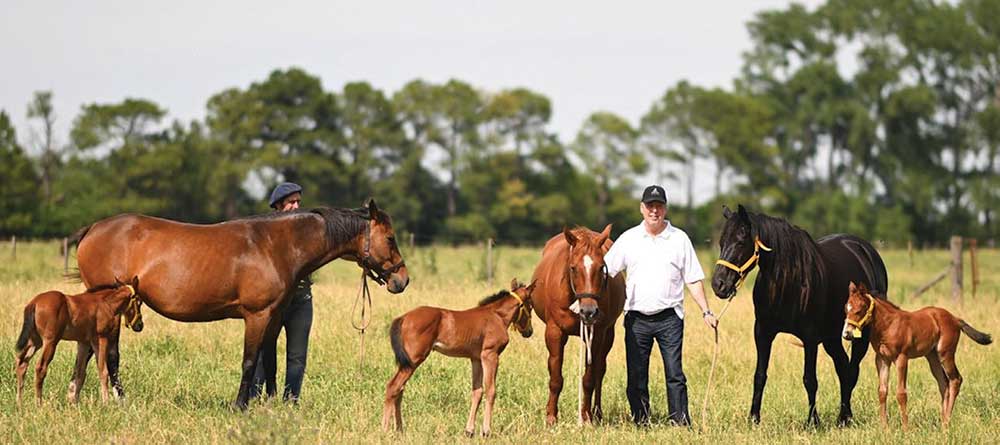
These polo breeders and others signed a letter addressed to Santiago Ballester, president of the AACCP, requesting that the genealogical records department of the SRA refrain from registering any specimen resulting from this genetic manipulation in the Polo Argentino breed, so as not to have to submit to any legal contingency in the future.
The AACCP replied, “Genetic editing is detectable only if it is known in advance and the original genetic material is compared with the edited organism. It is a powerful tool in human medicine research, with limitations in practical applications in veterinary medicine. The AACCP will study the feasibility of this process, for the sake of animal welfare, sporting fairness and for the benefit of the breed and the sport.”
To Tanoira, this response seemed insufficient. “Genetic editing is considered a genetic modification in most first world countries, therefore, animals obtained by this technique are considered GMOs and, not only will they be unable to compete in any sporting activity in those countries, but most likely, they will not even be allowed to enter their territory. Not them and all their progeny, that is their children, grandchildren, great-grandchildren, and great-great-grandchildren.
“I wonder what Alberto Pedro Heguy would have said if the Kheiron people had warned him of this little detail before agreeing to make his mare’s stem cells available for this experiment. I wonder what he will say now, when the chances are that these five clones will not only never be exported, but will never be allowed to play on a polo field in any country in the world. If the day comes when these practices are approved in the world, well, we will all sit around the table and evaluate the pros and cons and decide together what is best. But, for now, we can do nothing, but stand behind the AAP and its decision. There is a lot at stake. The foreign trade of polo horses will be cut off and polo will disappear, first in Argentina, and then in the world.”
Many specialists in his country agree with Tanoira. Dr. Marcela Martínez, deputy head of the Applied Genetics Laboratory of the SRA, said, “Gene editing is not a 100% safe technique, as it has so-called off-target edits that can cause many complications for these animals and all their progeny in the future.
“Contrary to what the AACCP maintains, it is possible to detect this editing with the equipment that the SRA has today. Gene editing is considered a genetic modification in most countries in the world, including the USA and the European Union, and animals that practice a sporting activity and have this modification would be committing genetic doping.”
Tanoira added, “This is not new. This laboratory had already obtained embryos with this technique in 2018, they had already announced it, they had already faced resistance from the AACCP, they already had to sign an affidavit at the Secretariat of Agriculture saying that these embryos were not going to be implanted, they had already had a complaint from a horse exporting company saying that this practice put at risk the export of horses of all breeds, and the AACCP itself, in a statement posted on its Instagram on Jan. 10, 2018, openly stated its opposition to this practice. “I wonder what happened between then and now: did anything change, was gene editing approved worldwide, was it no longer considered genetic doping? As far as I know, nothing has changed.”
In the land where the best polo in the world is played, a new controversy has arisen, dividing those who consider genetic editing to be a revolutionary technological advance in the world of breeding and those who see it as bending the laws of equality of conditions and competitiveness. Where everyone does agree, is that we are undoubtedly only at the initial feet of a long and contentious mile-long journey in the advancement of the genetic universe.
This article is reprinted with permission from Polo Magazine ©.
You can find more interesting articles in our section on Health & Education and Riding Disciplines. While you're here be sure to look around our Curated Amazon Store.
This Certified Horsemanship Association (CHA) video explains how to effectively count jump strides in a line of fences while doing a course walk on foot. It is always a good idea to measure precisely for correct striding for your horses when setting up jumps and to walk a course before you ride it.
Read more: Counting Strides in a Jump Course with Teresa Kackert (6:56)
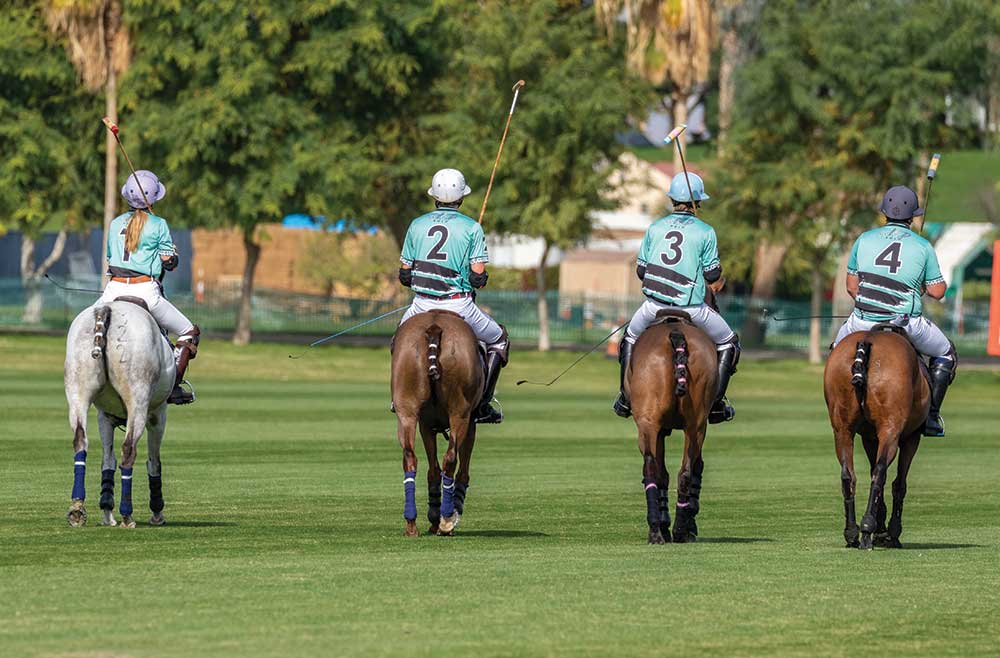
Sports psychology helps athletes of all ages, abilities
The recent Olympic Games in Paris, France, put mental health struggles, particularly among athletes, back in the spotlight. From Simone Biles, the most decorated gymnast, to Noah Lyles, dubbed the world’s fastest man, numerous Olympic athletes have shared their struggles with mental health over the years.
These types of struggles aren’t limited to Olympic athletes or even professional athletes. Amateur athletes also struggle with things like the effects of aging on their bodies; prolonged recovery after injury; handicaps dropping or not rising fast enough; slumps; and more.
Bill Cole, MS, MA, is founder and president of the International Mental Game Coaching Association and works as a performance psychology consultant. He has consulted with athletes, parents and coaches from all around the world on a wide variety of issues in sports psychology. He has been a mental game coach on 25 U.S. world, Olympic and national teams, and has worked with athletes or coaches in just about every sport imaginable, including polo. He has also certified a few polo players who wanted to become mental game coaches through his program.
How does sports psychology help athletes?
There are two big reasons people contact me. No. 1 is transition, and the other is, let’s say, anxiety. So, when people transition up from or into an older age group, a higher level of expertise, a brand new program, a new coach, they go from state to national, national to international, etc. and it brings a lot of uncertainty.
They don’t have their old systems in place and they are not comfortable. There are a lot of unknowns and I help people navigate that.
The other reason is just plain old anxiety or choking. People went into a competition and failed or didn’t do like they expected. They had a lot of fear or doubt and either they thought they needed help or their parents or coach directed them to someone like me.
.Choking and the performance decrement is generally overthinking. Thinking is great, but it has to be in the right place. You have to know when to turn your mind off as well.
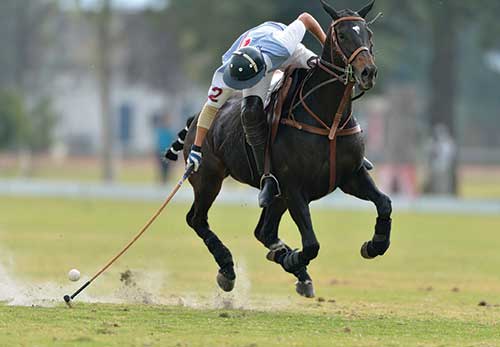
Even the best players make mistakes.
(Photo courtesy of Polo Magazine)
Is sports psychology something that can help any age and ability level?
The youngest person I’ve ever worked with was age 8, and this was a national level chess player, and the oldest person I’ve had was somebody in their 80s. There is really no sweet spot, it can be any age.
The only criteria is the person receiving the coaching has to want the coaching as opposed to being told they need coaching.
Has it become easier for athletes to talk about their struggles and ask for help?
Definitely. There used to be a stigma, but that has largely gone by the wayside. Virtually every single golf pro has a mental coach and every professional baseball team has a resident mental coach on staff.
Basically, every Olympic team has a sports psychologist. It goes on and on where it is so pervasive now that everybody uses a sports psychologist or performance coach if they want to get that special edge.
Is being mentally fit as important as being physically fit?
Yes, and let me define mentally fit for your sport. Do you have all your ducks in a row? Are you addressing all the challenges in the mental arena? If so, you are mentally fit.
I sit on multiple advisory boards, one of which is a high school organization that focuses on mental health for kids doing varsity sports in high school and planning to continue in college.
COVID was a devastating thing, but did the world of sports psychology and society at large a favor by highlighting the problems of mental wellness and mental health. Now, fortunately, very well-known athletes are talking about their mental health and people are paying attention, programs are being put in place and things are getting much better.
To be physically fit you have to work out on a regular basis. Is it the same for mental fitness?
Yes, in essence. I am not saying coaches should devote equal amounts of time to mental and physical training, but install a mental training program in their existing program that doesn’t take extra time. In other words, instead of an hour lecture at the end of every day after practice, I help them learn different mental strategies and tools that coaches can infuse in the practices moment to moment. Then, they are doing mental training as part of the fabric of the practices every day.
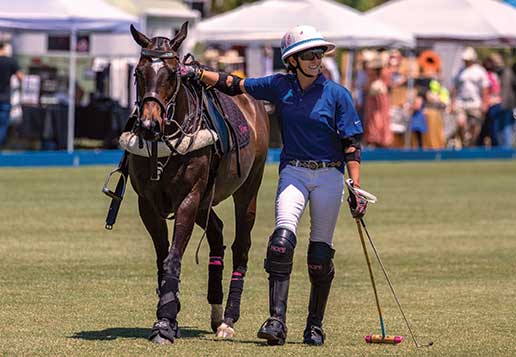
(photo courtesy of Polo Magazine)
Are their certain personalities, such as perfectionists, that require mental training more than others?
Every high-level athlete I’ve ever worked with--Olympic and professional--they tend to be very intense and they tend to be perfectionistic. But, the ones that succeed, and particularly those that succeed regularly, are able to overcome their tendency to be a perfectionist. Instead, they convert the perfectionism into a desire for excellence because perfectionism is a killer of performance. Perfectionists are so focused on avoiding mistakes and saving face that it causes a choke. You have to be OK with making a certain number of mistakes and certain types of mistakes and let those go rapidly so they don’t decompensate when they compete.
They have done surveys in terms of personality types. There are two broad categories: extroverts and introverts, who account for 20-40% of the populace.
Introverts are more prone to choking. Why? Because introverts like to live in their head. They are thinkers and analysts who like to break things down and understand everything. There is a quote I use all the time: thinking is wonderful, but a strength taken to an extreme turns into a weakness. That is what happens when you overthink at the drop of a hat.
Extroverts have their difficulties as well. Maybe they tend to gloss things over, be overconfident or maybe not think enough. Everybody is different so a custom approach is one you ultimately have to use.
Did the polo players you’ve worked with have similar struggles?
Two things stood out when I worked with polo players, although this is happening in every sport: one is dealing with big egos and the other is team communication, and they are kind of linked together.
If you have a real star on the team and they are not careful, they have a hard time respecting the other players. The other players sense that and it affects team communication.
Even with coaches, there is a communication issue. The star player may feel they can do no wrong, or they can make a mistake here or there, but no one has the right to criticize them.
How can a player keep a positive attitude when there are so many things that can go wrong?
Dedication and commitment are the glue that helps players keep it together when they make mistakes, have setbacks or adversity, criticism, losses or disappointments.
I collect quotes on a lot of different things and one category is famous athletes who talk about their love of the sport. They might say, even though I am an Olympian, one thing that really keeps me going is its in my DNA and I don’t have to force it, but I love my sport.
There is an expression I use, that the worst day on the polo field is far better than the best day in the office. So, learn to love and appreciate your sport. If it really gets you down, love it even more and figure those things out because the love is what keeps you going.
In baseball, the batting average for hall of famers is 300. The highest average is 375 and the lowest is 250. If you are batting 300 at any level, you are pretty much hall of fame material. That means for every 10 times at bat, you will fail seven times. You think you ought to be batting 800, but no one in history has ever batted 500.
It is the same concept for polo. You are never going to succeed 100 percent of the time. If you make attempts and make errors, welcome to the club. You are not the only one who is making mistakes.
As players get older, it can be frustrating when they can’t do the things as well as they once did.
How can they stay positive?
The older you get, hopefully the more gratitude you have that you are able to keep playing your sport. When you are younger, you sometimes take it for granted. When you get older, take it one day at a time, some days one hour at a time. Gratitude is a wonderful elixir, which is the opposite of whining or complaining.
As an exercise, answer four questions in your journal every day: What did you learn? What got better? What was fun? What were you grateful for? They are all positive in nature and can change anybody’s negative attitude to positive in under 30 days. It changes your point of view and once you decide to answer those questions, you will be looking for answers during the day and that changes your mindset.
What can someone do during a competition to refocus if things are not going their way?
There are control factors and I use three buckets of control. The first bucket is things totally out of your control, the second bucket is things that are totally in your control and the third is a hybrid of partial control. Make the list for each bucket.
Another important tool is a refocusing or reset tool. Sit quietly for 10 seconds and simply listen to your breath. Your breath reorients you to the present because the sound and feel of the breath is in the present. If you breathe for longer than 10 seconds, even better since it is going to relax you.
I might also ask, what time zone do you play good polo in, past, present or future? The answer is the present so reorient yourself to the present with your breath.
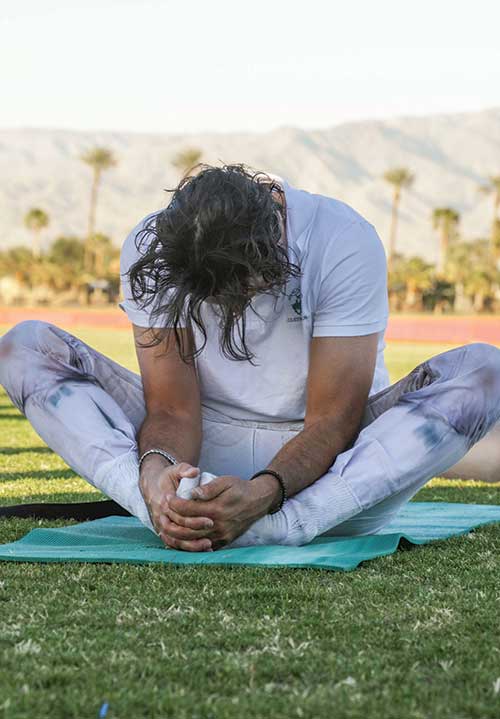
(photo courtesy of Polo Magazine)
Are there other exercises you can do off the field to complement mental coaching?
Very much so. People will do yoga and other relaxation exercises, like Bensons or progressive [muscle relaxation] that work nicely. There are also a number of phone apps, like Calm, that actively engage you with guided visualization or guided meditation.
As I said before, you don’t need to set aside time everyday to do mental training. I give you tools, techniques and strategies to infuse into your practice every single day.
In general, how long do you work with someone for mental coaching?
I have some people that come for a quick fix of a couple of months and that is it, and some are with me over six months or a year. I also have some people who come for a boot camp, for example. The longest I’ve had a client is every other week for eight years.
Do you generally work with people one-on-one or in a group setting?
COVID changed everything. Now I strictly work on Zoom and Facetime. Sometimes it is a small group, but the kind of work I do is much more powerful when its one-on-one because it is highly customized and I can go a lot deeper.
What is the process for hiring a performance psychology consultant, like you?
Basically, I’ve got a no-cost 65-item assessment on my website that pinpoints their strengths and weaknesses in the mental arena and rapidly gives us an agenda for coaching. The potential client fills it out and they get a copy and I get a copy. I then send information about the program.
For more information go to mentalgamecoaching.com.
This article is reprinted with permission from Polo Magazine ©.
You can find more interesting articles in our section on Health & Education and Riding Disciplines.
- Safely Saddling Western with Julie Goodnight (8:10)
- Gaits and Footfalls of the Horse with Julie Goodnight (9:58)
- You Want to Learn to Ride Horses? Would English or Western Work Best for You?
- Polo Development "Empowering Kids - Heartbeat of Program is Teaching Life Skills"
- Horseback Riding Training in the USA
- Las Pampas Ponies - Argentine stud farm bred smaller polo Thoroughbreds
- If You Build It, They Will Jump…!
- Horse Racing: The Best Jockeys in Australia
- Best of the Bunch
- Para Dressage In Tokyo: USA Takes The Podium
- StreamHorseTV’s Tokyo Takeaways, Presented by Haygain
- Olympians Music is Elevating Entertainment Value in Dressage
- Tokyo Olympics: Dutton’s Diaries
- Olympia London International Horse Show
- Paperless Scoring Has Arrived
- Horse Trainer Carly Ramsey Finds Success in Wildly Different Equestrian Disciplines
- Escondido Girl, 12, a World Champion Equestrian
- "You just keep going" 11-Year-Old Becomes Cutting Horse World Title Holder
- My Horse Accepts Me, So the Rest of the World Can, Too
- Gonza Pieres talks horses: “I am intrigued by each player’s best horses”































